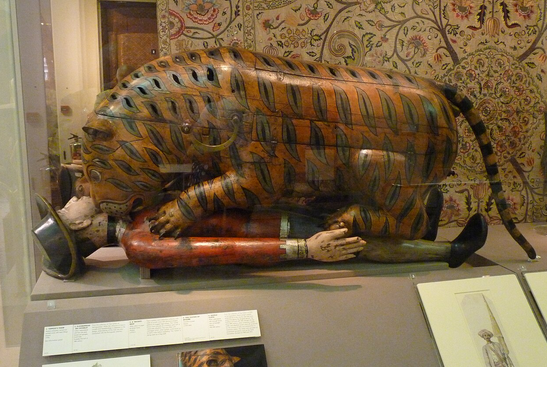Beyond Labubu: Why India's 300-Year-Old Traditional Dolls Deserve Your Attention in 2025
The Global Doll Craze: From Labubu to India's Heritage Treasures

While Labubu dolls are popular and seemingly a worldwide obsession, gaining traction in April 2024 when Lisa from BLACKPINK casually shared a photo of her figure, India has been crafting exquisite dolls for over 300 years. As millennials and Gen Z adults fuel the mystery or blind-box craze and reshape the U.S. toy and collectibles market, it's time to explore India's rich doll-making heritage that offers authenticity, sustainability, and cultural depth that mass-produced toys simply cannot match.
India's Traditional Doll Legacy: Stories That Span Centuries
Channapatna Dolls: The Royal Connection from Karnataka
Did you know these tiny dolls have been telling stories for over 300 years? Ivory wood dolls from Channapatna, Karnataka, have been gifted to prestigious figures including the President of Guyana, the Prince of Bhutan, and Michelle Obama. In the 18th century, Mysore ruler Tipu Sultan, inspired by a lacquered Persian toy, made his artisans learn the craft. Tipu's passion for wooden toys also led to the creation of the famous Tipu's Tiger automaton—symbolizing his hatred for the British—now displayed in the London Museum.

Thanjavur Thalaiyatti Bommai: The Dancing Dolls of Tamil Nadu
Like Channapatna dolls, the Thanjavur Thalaiyatti Bommai (Tanjore dolls), introduced by Maratha ruler Serfoji I in the early 19th century, are an important part of the Dasara Golu display during Navratri in South Indian homes. Interestingly, a similar tradition exists in Japan—on March 3, during Hinamatsuri (Doll Festival), Japanese dolls are displayed and parents pray for their children's well-being.
Banarasi Toys: From Ivory to Eco-Friendly Wood
The Kharadi community of Varanasi, traditional makers of Banarasi toys, originally carved dolls from ivory but switched to softer wood like Gooler after ivory was banned in 1986. They use colored lac to decorate the toys. According to artisans, Varanasi's woodworking dates back to the Ramayana era, with the first product being the Sindoora, a container for sindoor. Banarasi toys now include matryoshka dolls, kitchen sets, movable figurines, mythological idols, and more. The famous Ram Darbar lacquerware was even gifted to President Joko Widodo.
Regional Doll Varieties: India's Diverse Craftsmanship
Papier-Mâché Artistry from Kashmir and Jharkhand
India has a rich and diverse tradition of toy-making, including Papier-mâché, introduced to Kashmir in the 14th century by Persian saint Mir Sayyid Ali Hamadani and his craftsmen. In Jharkhand, artisans craft traditional papier-mâché masks for the Chhau dance, showcasing regional cultural expression.
Etikoppaka Toys: 400-Year-Old Eco-Friendly Tradition
Etikoppaka toys, from a 400-year-old tradition in Andhra Pradesh, are renowned for being eco-friendly and made from natural materials like seeds, lacquer, bark, roots, and leaves. Crafted from wood of the Ankudi Karra tree (Wrightia tinctoria), these toys reflect a deep harmony with nature, using a traditional lacquer technique that applies natural dyes from seeds, bark, and leaves after shaping the wood, creating dreamlike toys with a smooth, lacquered finish and natural hues.
Kondapalli Toys: Capturing Everyday Life
Kondapalli toys from Andhra Pradesh involve carving separate parts and then joining them with a Makku paste, followed by the application of enamel paints and vegetable dyes. Unlike Etikoppaka toys, Kondapalli toys capture everyday life with their detailed craftsmanship.
Laiphadibi Dolls: The Protective Spirits of Manipur
Laiphadibi Dolls of Manipur are traditional cloth dolls of the Meitei people. It is believed that these dolls guard and guide Manipuri people. As children were told: "If you do not put your laiphadibi back in the lubak (bamboo basket) after playing, they will cry at night under the banana plants"—creating a fascinating folklore around these protective dolls.
Asharikandi Terracotta: Born from Monsoon Tears
Asharikandi, a village near Dhubri in Assam, is renowned for its traditional terracotta dolls. The name "Asharikandi" derives from "Ashar" (monsoon) and "Kandi" (tears), reflecting the area's frequent flooding and the hardships faced by its people.
Regional Treasures: From Bengal to Madhya Pradesh
The iconic wooden owl of Natungram Dolls from West Bengal, crafted from natural materials like clay and straw, and the Jhabua dolls of the Bhilala tribes in Madhya Pradesh, made from upcycled materials like old items from grandmothers, embody deep emotional connections. These dolls carry a sense of bonding and tradition, passed down through generations to children.
Why Indian Traditional Dolls Are Superior to Mass-Produced Toys
Safety and Sustainability
These kid-friendly dolls are made with natural colors and softened edges. They do not contain any heavy metal or toxic items, making these toys environmentally friendly and sustainable but also 100% safe for child usage. Therefore, many parents find themselves being inclined to these toys, contributing to the safety of children and the environment, making them popular and relevant in the current socio-economic climate.
Cultural and Educational Value
Unlike the fluffy, sharp-toothed figurines adorning pants and bags across the globe that represent modern consumer culture, Indian traditional dolls carry centuries of cultural heritage, storytelling, and educational value. Each doll represents regional traditions, mythology, and artistic techniques passed down through generations.
Challenges Facing Traditional Doll Artisans in 2025
Competition from Mass-Produced Toys
In the past few decades, their toys, like most indigenous craft products, face stiff competition from cheap, mass-produced, made-in-China toys that have captured almost 80% of India's toy market. The same reports suggest that 400 items of wooden toys have been discontinued because of low demand.
Economic Sustainability Issues
Income from traditional doll-making is not sustainable, so most craftsmen end up leaving the craft, with only 1,500 traditional artisans left in Channapatna. The problem these toy makers face includes the construction of new highways that connect Bangalore to Mysore, bypassing the town of Channapatna, affecting local commerce.
Infrastructure and Market Access
Traditional artisans face bureaucratic challenges and lack access to modern design trends and marketing platforms that could help them reach contemporary consumers who are increasingly interested in authentic, handcrafted products.
Government Initiatives Supporting Traditional Doll Artisans
Make in India Campaign Success
Prime Minister Narendra Modi introduced the Make in India initiative that aims to encourage locally made products, and this campaign has been something of a boon for the toymakers. When Modi came to power in 2014, Varanasi toys were given the GI tag (Geographical Index), which certifies to customers that the toys are part of a genuine local craft. Channapatna dolls also received the Geographical Indication (GI) tag, acknowledging their unique origin and craftsmanship.
Skill Development Programs
The government launched several initiatives:
- Shramik Bharan Poshan Yojana: A government welfare scheme launched on March 21, 2020, to help daily wage laborers affected by the lockdown
- Kaushal Unnayan Prashikshan Karyakram: Skill upgrade training programs that come with stipends to encourage young kaarigars to develop their skills and continue artistic professions
- Master craftspeople are required by government schemes to train other artisans in their community
Community-Led Revival Efforts
One young artisan, Uday Raj Kunder, came to the aid of his community using the platform of the Khilauna Udyog Sahkari Samiti (Toy Industry Workers Committee) established by his national award-winning grandfather Godawari in 1953. Uday documented the information of various artisans and applied for their artisan cards. Because of these initiatives, more and more women are also learning this craft of toymaking.
Social Enterprise Support
Organizations like Varnam Collective, a social enterprise in Bangalore, are trying to revive the dying toy craft by focusing on modern designs and livelihood for artisans. However, government initiatives are still required to grow the art and sustain it, as artisans need support to try out new modern designs while maintaining traditional authenticity.
The Future: Bridging Tradition with Modern Trends
Learning from the Labubu Phenomenon

While Labubu-mania firmly took hold in North America and Europe by the end of 2024 and retail prices range from ₹5,000 to ₹18,000 in India, Indian traditional dolls offer far more value at much lower prices. The success of Labubu teaches us important lessons about:
- Celebrity Endorsement Power: Just as Lisa from BLACKPINK sparked global interest, Indian traditional dolls need celebrity advocacy
- Social Media Marketing: Traditional dolls need strong digital presence
- Collectible Appeal: The mystery box concept could be adapted for traditional Indian dolls
- Fashion Integration: Like Labubus clipped to bags or belt loops, traditional dolls can become fashion statements
Sustainable Alternatives in the Collectible Market
As the character is making its way into the cultural fabric of 2025, showing up in unexpected places such as fashion editorials and digital art NFTs, Indian traditional dolls represent authentic cultural collectibles that offer:
- Heritage Value: 300+ years of history vs. recent commercial creation
- Sustainability: Natural materials vs. synthetic production
- Uniqueness: Each handcrafted piece is unique vs. mass production
- Cultural Significance: Deep-rooted traditions vs. commercial design
- Educational Value: Learning about Indian culture vs. pure entertainment
Popular Traditional Doll Types to Collect in 2025
Premium Heritage Collections
- The Good Doll: Sustainable fabric dolls handcrafted by women from rural Nilgiris communities, emphasizing ethical and eco-friendly production
- Natungram Dolls from West Bengal: Made with clay, straw, and jute fiber, connected to cultural heritage and goddess Laxmi
- Jhabua Dolls from Madhya Pradesh: Made from upcycled colorful sarees, with clay faces and traditional tribal attire, reflecting Bhil and Bhilala tribes
- Manipur Dolls by Konsam Ibomcha Singh: Made with dried grass and clay, painted and dressed in traditional Manipur attire, depicting local culture and occupations
Some Authentic Traditional Dolls of India
- Lacquered Wooden Kitchen Utility items
- Paper Mache from Jharkhand
- Etikoppaka Toys from Andhra Pradesh: Available through certified artisan collectives
- Banaras Toys
- Kashmir Paper Mache Craft
Sri Kamakshi Dolls: Keeping Navratri Golu Traditions Alive
While Labubu dolls have captured global attention, South India celebrates its own cherished doll tradition during Navratri with Golu dolls. These sacred displays have been an integral part of South Indian cultural celebrations for centuries, bringing families together to create elaborate storytelling arrangements.

Sri Kamakshi dolls on the Misrut platform are dedicated to preserving this beautiful tradition while adapting to modern needs. These exquisitely crafted dolls serve multiple purposes beyond the traditional Navratri Golu decorations:
- Religious Ceremonies: Perfect for Upanayanam (sacred thread ceremony)
- South Indian Weddings: Traditional decor that adds cultural authenticity
- Baby Showers: Meaningful gifts that bless new beginnings
- Festival Celebrations: Year-round use for various Hindu festivals
- Cultural Gifts: Thoughtful presents that carry deep spiritual significance
Unlike mass-produced collectibles, Sri Kamakshi dolls embody the sacred artistry of South Indian tradition, making them ideal for both devotional practices and cultural preservation. Each doll is crafted with attention to religious iconography and traditional aesthetics.
Discover authentic Sri Kamakshi dolls at: www.misrut.com/kamakshidolls
Conclusion: Choose Heritage Over Hype
While the Labubu dolls are seemingly a worldwide obsession, India's traditional dolls offer something far more valuable: authentic cultural heritage, sustainable craftsmanship, and the opportunity to support struggling artisans who are keeping centuries-old traditions alive. By choosing Indian traditional dolls over mass-produced alternatives, consumers can:
- Support sustainable and eco-friendly toy production
- Preserve cultural heritage for future generations
- Ensure fair wages for traditional artisans
- Own unique, handcrafted pieces with historical significance
- Provide children with educational toys that teach cultural values
As we witness the global success of collectible toys in 2025, it's time to redirect our attention to the incredible doll-making traditions that have existed in India for centuries. These dolls don't just represent playthings; they embody the soul of Indian craftsmanship, the wisdom of our ancestors, and the hope for a sustainable future.
Support Indian traditional doll artisans today and be part of preserving our incredible cultural heritage while making conscious consumer choices for a sustainable future.
Running a business and need support: www.misrut.com/kamakshidolls
To know more about how misrut can help you, visit misrut
